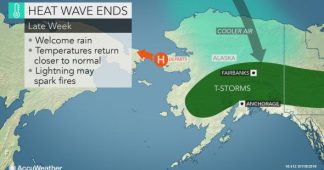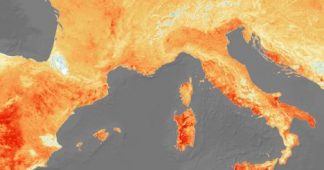Hot days are getting hotter, sweltering nights are no longer rare and heat spells are lasting longer. Figures for Jerusalem, Israel and the region point to a scalding trend
9 October 2020
For nine days, from May 13 to May 21, Jerusalem saw an unprecedented string of high daily temperatures above 33º C (91.6º F). The record stood all of two and a half months, until August 29.
That day, the high temperature in the city soared to a scorching 38.2º C. It would be 14 days until the high in Jerusalem would cool to a breezy 32.1º C on September 12, and it would take another 10 days until the high finally dipped below 30º C — barely — topping out at 29.4º C on September 22.
The fact that September 2020 was the hottest month in recorded history in Jerusalem likely comes as no surprise to anyone who sweated through the heatwave that blanketed the city. The unprecedented run included two days, September 3 and 4, during which the temperature hit 42.3º C and 42.7º C respectively, the highest temperatures Jerusalem had seen in over 100 years, bested only by the 44.4º C, reached on two days in August 1881, according to the Israel Meteorological Service.
While the extremeness of the temperatures was terrifying, scientists say that what is more ominous are the larger trends and how long the heat waves are lasting. A look at the daily temperature data compiled by the Israel Meteorological Service over the last 70 years provides a sweat-inducing peek at just how hot Jerusalem is becoming, and how temperatures and heatwaves once regarded as rare have become commonplace.
According to Prof. Yoav Yair, Dean of the School of Sustainability at the Interdisciplinary Center, a Herzliya-based university better known as IDC, a series of days with temperatures of 33º C (91.4º F) or higher is the threshold for a heatwave in Jerusalem.
Read more at www.timesofisrael.com











